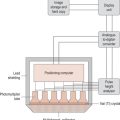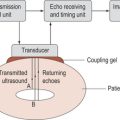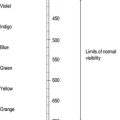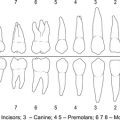N
naevus (mole) a circumscribed lesion of the skin arising from pigment-producing naevus cells or due to a developmental abnormality of blood vessels.
nanogram (ng) one thousandth part of a microgram. 10−9 of a gram.
nanometre (nm) one thousandth part of a micrometre. 10−9 of a metre.
nape (nucha) back of the neck.
narcotic a drug causing abnormally deep sleep.
nares (choanae) the nostrils. anterior nares the pair of openings from the exterior into the nasal cavities. posterior nares the pair of openings from the nasal cavities into the nasopharynx.
nasal associated with the nose.
nasal cavity that in the nose, separated into right and left halves by the nasal septum.
nasal conchae irregular bones which lie on the lateral walls of the nasal cavity.
nasal speculum used for examination of the nose and for treatments, such as nasal cautery and packing to stop bleeding.
nasal tube a catheter inserted into the nasal passages to permit the administration of oxygen therapy.
nasoduodenal associated with the nose and duodenum, as passing a nasoduodenal tube via this route, for feeding. See also enteral.
nasogastric (NG) associated with the nose and stomach, as passing a nasogastric tube via this route, usually for aspiration, or feeding.
nasojejunal associated with the nose and jejunum, usually referring to a tube passed via the nose into the jejunum for feeding.
nasolacrimal associated with the nose and lacrimal apparatus.
naso-oesophageal associated with the nose and the oesophagus.
nasopharynx the portion of the pharynx above the soft palate.
National Framework for Assessing Performance a framework that includes six areas for the assessment of NHS performance: effective delivery of appropriate health care; efficiency; fair access; health improvement; health outcomes and the patient/carer experience. See also Performance Indicators.
National Institute for Clinical Excellence (NICE) a Special Health Authority that generates and distributes clinical guidance based on evidence of clinical and cost effectiveness.
National Service Frameworks (NSFs) evidence-based frameworks for major care areas and particular groups of disease, e.g. diabetes, older people, that state what patients/clients can presume to receive from the NHS.
nausea a feeling of impending vomiting.
navicular boat-shaped, like a canoe, such as the bone in the foot.
nebulizer an apparatus for converting a liquid into a fine spray. It is used to deliver medicaments for application to the respiratory tract or the skin. A very common method of drug delivery used in the management of asthma.
neck a constricted section, the part of the body that connects the head with the trunk, the area below the head of a bone as in the neck of humerus, the neck of femur, the part of a tooth where the root merges with the crown. The constricted section of an organ as in the neck of uterus.
necrosis localized death of tissue.
necrotizing fasciitis rare infection caused by some strains of group A Streptococcus pyogenes. There is very severe inflammation of the muscle sheath and massive soft-tissue destruction. The mortality rate is high.
needle biopsy the removal of tissue from a lesion, for analysis by using a needle; the needle is rotated and the tissue remains in the lumen.
needlestick injury an injury caused when the skin is pierced by a hypodermic needle. Risk is greatest when the needle is contaminated with blood from a person infected with a blood-borne virus such as hepatitis B or C or HIV.
needs assessment estimating the need (quantifying) for services in a population. normative, or assessed, need is need defined by the expert or professional in any given situation; felt need, or want, perceived by the individual; expressed need or operationalized felt need; comparative need using the characteristics of a population receiving a service to define those with similar characteristics as in need. needs assessment uses broad, non-specific indicators of need obtained through repeated health surveys of the general population (e.g. General Household Survey, Health Survey for England) and more specific indicators based on surveys of particular groups (e.g. survey of disabled people, urinary incontinence). The weighted capitation formula for resource allocation uses the characteristics of populations using hospital services as indicators of need.
negative correlation in statistics, when information is linked and an increase in one item will result in a decrease in the other and an increase in one item will result in an decrease in the other.
negative number a number with a value of less than zero.
negatron a negative beta particle.
negligence a form of professional malpractice which includes the omission of acts that a prudent health professional would have done or the commission of acts that a prudent health professional would not do. It is a professional duty to avoid patient/client injury or suffering caused in this way. It can become the basis of litigation for damages. See also Bolam test, duty of care.
Nelaton’s line an imaginary line joining the anterior superior iliac spine to the ischial tuberosity. The great trochanter of the femur normally lies on or below this line.
neoadjuvant therapy preliminary cancer treatment such as chemotherapy or radiation that usually precedes another phase of treatment, for example, to reduce tumour size before surgery.
neonatal relating to the first 28 days of life.
neonatal herpes acquired during vaginal delivery from a mother actively shedding herpes simplex virus. It is a devastating illness with a 75% mortality rate and a high incidence of severe neurological pathology among survivors.
neonatal mortality the death rate of babies in the first month of life.
neonatal unit (NNU/NICU/SCBU) usually reserved for preterm and small-for-dates babies between 700 and 2000g in weight, mostly requiring the use of high technology which is available in these units.
neonate a newborn baby up to 4 weeks of age.
neoplasia literally, the formation of new tissue. The new or abnormal development of cells that may be benign or malignant.
neoplasm a new growth of cells forming a tumour that is either cancerous or non-cancerous.
nephrectomy surgical removal of a kidney.
nephritis non-specific term for inflammation within the kidney.
nephroblastoma the most common solid tumour of the kidney arising from immature or undifferentiated embryonic cells, usually presents as an abdominal mass. Also known as Wilms’ tumour.
nephrocalcinosis calcification within the kidney.
nephrolithiasis stone, disease affecting the kidney.
nephrolithotomy removal of a stone from the kidney by an incision through the kidney substance. percutaneous nephrolithotomy a minimally invasive technique where the kidney pelvis is punctured using X-ray control. A guide wire is inserted through which the stone is removed using a nephroscope (endoscope).
nephrology study of diseases of the kidney.
nephron the functional unit of the kidney, comprising a glomerulus and renal tubule. The tubule has a Bowman’s capsule, proximal and distal convoluted tubules, loop of Henle and a collecting tubule that drains urine from many nephrons to the renal pelvis.
nephronophthisis rare disorder involving the growth of many small cysts in the medulla of the kidney; often leads to renal failure.
nephropathy any disease of the kidney in which inflammation is not a major component.
nephroptosis downward displacement of the kidney. The word is sometimes used for a floating kidney.
nephroscope an endoscope for viewing kidney tissue. It can be designed to create a continuous flow of irrigating fluid and provide an exit for the fluid and accompanying debris.
nephrostomy a surgically established fistula from the pelvis of the kidney to the body surface.
nephroureterectomy removal of the kidney along with a part or the whole of the ureter.
nerve an elongated bundle of fibres which serves for the transmission of impulses between the periphery and the nerve centres. See also afferent nerve, efferent nerve, nerve growth factor.
nerve growth factor (NGF) protein required for nerve growth and maintenance.
nervous relating to nerves or nerve tissue. Referring to a state of restlessness or timidity. nervous system the structures controlling the actions and functions of the body; it comprises the brain and spinal cord (central nervous system), and the peripheral nerve fibres and ganglia. See also autonomic nervous system, peripheral nervous system, parasympathetic, sympathetic nervous system.
network a system, usually connected by telephone line, which interconnects a number of computers so that they can share information and hardware, for example, printers.
neural associated with nerves.
neural canal the cavity within the vertebral column that houses the spinal cord.
neural tube formed from fusion of the neural folds from which the brain and spinal cord are formed.
neural tube defect any of a group of congenital malformations involving the neural tube including anencephaly, hydrocephalus and spina bifida.
neuralgia pain in the distribution of a nerve.
neurilemma the thin membranous covering of a nerve fibre surrounding the myelin sheath.
neurinoma a tumour arising from peripheral nerves. The most common is the acoustic neuroma arising from the 8th cranial nerve. The main symptom is deafness.
neuroblast a primitive nerve cell.
neuroblastoma malignant tumour of immature nerve cells most often arising in the very young, and is most common in the adrenal medulla from tissue of sympathetic origin.
neurofibroma a tumour arising from the connective tissue of nerves resulting from the abnormal spread of Schwann cells.
neurogenic originating within or forming nervous tissue.
neurogenic incontinence overflow incontinence, dribbling of urine from an overfull bladder.
neurogenic shock shock caused by the loss of vascular tone and therefore dilatation of the blood vessels as a result of severe pain or fright. Now called vasovagal shock.
neuroglia (glia) the supporting tissue of the central nervous system (brain and cord). See also astrocytes, ependymal cells, microglial cells, oligodendrocytes.
neurologist a specialist in neurology or a medically qualified person who specializes in diagnosing and treating diseases of the nervous system.
neurology the science and study of nerves – their structure, function and pathology. The branch of medicine dealing with diseases of the nervous system.
neuromuscular associated with nerves and muscles.
neuron(e) a nerve cell. The basic unit of the nervous system comprising fibres (dendrites) which convey impulses to the nerve cell; the nerve cell itself, and the fibres (axons) which convey impulses from the cell. They are specialized excitable cells that are able to transmit an action potential. See also motor neuron disease, lower motor neuron, upper motor neuron.
neuropeptides neurotransmitters, including endorphins.
neuroplasticity the ability of nerve cells to regenerate.
neuroplasty surgical repair of nerves.
neurosurgery surgery of the nervous system.
neurothekeoma a soft-tissue tumour of the nerve sheath cells.
neutron a particle within the nucleus of an atom that has no electrical charge.
neutron number (N) the number of neutrons within the nucleus of an atom.
neutropenia reduction in the number of neutrophils in the blood.
neutrophil the most common form of white blood cell. It is a phagocytic polymorphonuclear cell with granules.
newton (N) a unit of force. Derived SI unit (International System of Units).
Newton’s laws of motion Law 1. A body will remain at rest or will travel with constant velocity unless acted upon by a net external force. Law 2. The rate of change of momentum of a body is proportional to the applied force. Law 3. The action of one body on a second body is always accompanied by an equal and opposite action of the second body on the first.
NEX in magnetic resonance imaging the number of signal excitations repeated in a given acquisition. This is a way of increasing signal to noise ratio by increasing the time.
NHS Trusts public accountable bodies that provide NHS health care to the population, either as a hospital or community trust.
night splinting the passive night time use of external devices such as splints to maintain corrected deformities produced dynamically during walking. This may be an additional silicone digital device to maintain correction in bed, or a night splint to maintain ankle extension at 90° where there is tightening of the Achilles tendon. Night splints for the management of hallux valgus are often used as the only corrective measure.
night sweat profuse sweating, usually during sleep; typical of tuberculosis or lymphoma.
nipple the conical eminence in the centre of each breast, containing the outlets of the milk ducts.
nitric oxide (NO) an internal substance that alters the transmission of nerve impulses. It is involved with processes that include memory, learning, gastric emptying, the response to painful stimuli and penile erection. May be used therapeutically for patients with acute respiratory distress syndrome.
nitrogen (N) an almost inert gaseous element; the chief constituent of the atmosphere (78–79%), but it cannot be utilized directly by humans. However, certain organisms in the soil and roots of legumes are capable of nitrogen fixation. It is a vital constituent of many complements of living cells, e.g. proteins. The essential constituent of protein foods.
nitrogen balance is when a person’s daily intake of nitrogen from proteins equals the daily excretion of nitrogen: a negative balance occurs when excretion of nitrogen exceeds the daily intake. Nitrogen is excreted mainly as urea in the urine: ammonia, creatinine and uric acid account for a further small amount. Less than 10% total nitrogen is excreted in faeces.
nitrous oxide (N2O) an inhalation anaesthetic ensuring a brief spell of unconsciousness. Known colloquially as laughing gas.
nociceptors receptors that respond to harmful stimuli that cause pain, such as trauma and inflammation.
nocturia passing urine at night.
node a protuberance or swelling. A constriction, for example, node of Ranvier the constriction in the neurilemma of a nerve fibre. Any computer equipment that communicates on a network.
no fault liability acknowledgement that compensation is payable without the requirement to prove a failure in fulfilling the duty of care.
noise in imaging, the extraneous random visible grain on an image, although this detracts from the image quality, there is an acceptable amount of noise within a diagnostic image. Eliminating noise requires an increase in exposure which may be unnecessary to achieve the aims of the examination.
noise equivalent quanta (NEQ) in a system is the square of the signal to noise ratio and indicates the flux density of X-ray quanta that forms the image.
nominal data categorical data where the classes have no particular value or order, such as road names or colours. See also ordinal data.
nominal scale a number given to objects that are similar to each other, a method of classification.
nominal standard dose the tolerance of normal tissues (D) can be related to the overall treatment time (T) and the number of fractions (N) by the formula: DN = (NSD)T0.11 ÷ N0.24.
nomogram graph with several variables used to determine another related variable, such as body surface area from weight and height.
non-accidental injury (NAI) physical maltreatment, usually of children by their parents, carers, other adults, or even other children. The injuries cannot be attributed to natural disease processes or simple accident. The injuries are often multiple and typically include bruising, shaking injuries, fractures and burns, and involve the head, soft tissues, long bones and the thoracic cage. There may be evidence of neglect and usually there is associated psychological harm. See also abuse.
noncoplanar treatment a treatment that is given in one or more planes. The rationale for this type of treatment is to avoid overlap of beam entrance and exit points.
non-Hodgkin’s lymphoma (NHL) tumour of lymphoid tissue. More common in older people. The cure rate is less good than that for Hodgkin’s disease. See also lymphoma.
non-insulin dependent diabetes mellitus (NIDDM) see diabetes mellitus.
non-invasive describes any diagnostic or therapeutic technique that does not require penetration of the skin or of any cavity or organ.
non-invasive intermittent positive pressure ventilation (NIPPV) a type of respiratory support that uses a nasal or full-face mask rather than an endotracheal or tracheostomy tube.
non-maleficence ethical principle of doing no harm.
non-parametric tests statistical test that makes no presupposition about the distribution of data. See also parametric tests.
non-small-cell lung carcinoma (NSCLC) commonest type of lung cancer accounting for approximately 80% of tumours. The histological subtypes include squamous, adenocarcinoma and large cell. The doubling time is approximately 130 days. Clinical presentation may be with cough, haemoptysis, recurrent pneumonia, increasing breathlessness, weight loss or may be an incidental finding on chest X-ray. Therapy may include surgery (in approximately 20%), chemotherapy and/or radiotherapy.
non-steroidal anti-inflammatory drugs (NSAIDs) a group of drugs that control pain, sickness and inflammation, examples include aspirin and ibuprofen.
noradrenaline (norepinephrine) a catecholamine neurotransmitter released from adrenergic nerve endings and in small amounts from the adrenal medulla. Its physiological effects include vasoconstriction and a rise in blood pressure. See also adrenaline (epinephrine).
norm a measure of a phenomenon generally accepted as an ideal against which all other measures of the phenomenon can be measured, i.e. a standard against which values are measured.
normal distribution curve in statistics. When scores are plotted they form a symmetrical bell-shaped curve that has the mean, median and mode in the centre. See also skewed distribution.
normal population a normal distribution curve is produced when the data are plotted.
normal tissue tolerance the dose of radiation given to a specific organ or tissue, that gives a certain probability of a particular complication.
normoblast a normal-sized nucleated red blood cell, the precursor of the erythrocyte.
normotonic normal strength, tension, tone, by convention referring to muscle tissue. Antispasmodic drugs induce normotonicity in muscle, and can be used before radiography.
nostrils the anterior openings into the nose.
notifiable describes incidents or occurrences and diseases that must by law be made known to the appropriate agency. For example diseases such as tuberculosis, food poisoning and measles must be reported to the relevant department.
N-type semiconductor a device where the majority of carriers are the electrons in the conduction band and the minority carriers are the holes in the valence band. See also P-type semiconductors.
nucal translucency scan an ultrasound scan done to measure from the cervical vertebrae to the posterior skin surface of the fetus. A measurement of greater than 3mm at 11–14 weeks means that there could be an increased risk of aneuploidy (a variation in the number of chromosomes).
nuclear energy levels the discrete energy levels occupied by nucleons in the nucleus of an atom.
nuclear force the force present in the nucleus of an atom which contains the particles inside the nucleus. The nuclear binding energy is different in different elements but is about 8 MeV per nucleon.
nuclear magnetic resonance (NMR) see magnetic resonance imaging.
nuclear medicine the use of radionuclide techniques for the diagnosis, treatment and study of disease.
nuclear reactor a method of producing electricity through controlled nuclear fusion which produces heat which turns water to steam which drives electric generators.
nuclear spin a property of nuclei which have an odd number of neutrons and/or protons which gives them angular and magnetic momentum. The spins of the nuclei have characteristic fixed values. Nuclei of paired neutrons and protons align to cancel out their spins and therefore do not resonate.
nucleated possessing one or more nuclei.
nucleon the protons and neutrons within the nucleus of an atom.
nucleus the central part of an atom that contains neutrons and protons. The membrane-bound cellular structure which contains the genetic material (chromosomes). A confined accumulation of nerve cells in the central nervous system associated with a particular function.
nucleus pulposus the soft core of an intervertebral disc which can prolapse into the spinal cord and cause back pain or sciatica.
nuclide an individual atom of given atomic number and mass number.
null hypothesis a statement which asserts that there is no relationship between the dependent and independent variables.
numbers needed to treat a method of stating the benefits of a therapeutic intervention. The number of subjects who need to receive treatment before one subject has a positive outcome.
nyastin suspension antifungal antibiotic.
Nyquist frequency the frequency equal to or greater than twice the highest frequency in an analogue signal.
Nyquist limit the maximum frequency that can be handled to enable an accurate reconstruction to take place, for example, in pulsed wave Doppler imaging, above this level aliasing occurs. See also aliasing.
Nyquist theorem states that an analogue signal waveform may be reconstructed without error from a sample which is equal to, or greater than, twice the highest frequency in the analogue signal, for example, to digitally convert a 2MHz signal a sample must be taken at 4MHz.






